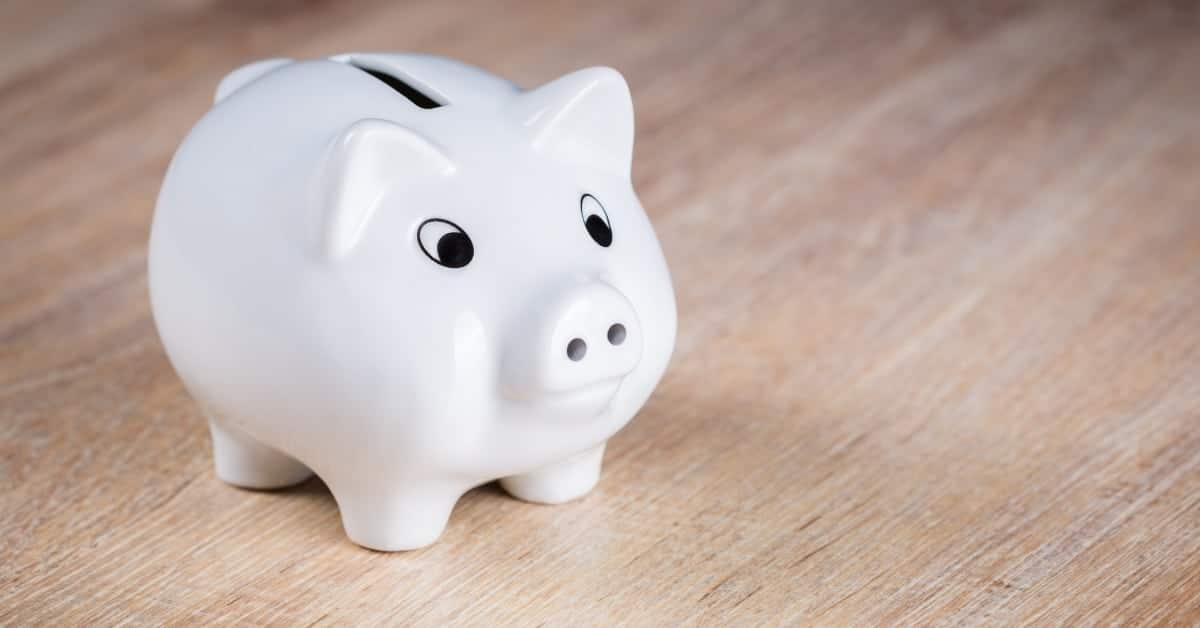
Emergency Fund – How to Start from Nothing
How much do you have in your emergency fund? $100? $500? Or are you reading this thinking “Emergency fund? Yeah right!” Finding ways to create a savings account shouldn’t be overwhelming. I’ve got some tips and tricks to putting a little bit of cash aside so you can begin developing the emergency savings you need.
Disclosures: The links in this post may contain affiliate links through which I can receive a small commission at no additional cost to you if you make a purchase after clicking on my link.
Emergency Fund Help
First let’s start with what exactly an emergency savings is. An emergency savings is just how it sounds – funds that have been set aside to be used only in the event of an emergency. These emergencies can range everywhere from losing your job, crashing your car, or an unexpected illness that leaves you with outrageous medical bills.
It is impossible to be ready for any emergency that comes your way, but one of the best things you can do for yourself and your credit is to create an emergency fund to bail you out of any unforgiving financial situations.
If you’ve seen how I create a budget, you know that we don’t have a lot of wiggle room. Between daycare costs, student loans, mortgage – it’s hard not to live paycheck to paycheck!
When we bought our house in 2014, we obliterated our savings and then some. Despite a thorough inspection and a supposed HUD-regulated appraisal, we ran into a few issues shortly after moving in and had to pay for repairs with a credit card. A year later and $276 in interest later, I’m happy(ish) to say we’ve paid that off and no longer hold any credit card debt. If we’d had an emergency fund, though, we could have used that $276 as an additional payment on our mortgage or car loan, thereby saving us not just the $276, but whatever interest was charged on that payment that was never made.
Why a Credit Card is NOT a Savings
A credit card can be great if you use it properly. Because we do so much of our household shopping through Amazon Prime, we have an Amazon.com Rewards VISA. It’s great because we earn 3% on anything bought through Amazon plus 1-2% on everything else. We even got a $50 gift card when we signed up! The trick is making sure that we only use it on things we already have the cash for. This way we can immediately pay it off once the bill comes but we still earn cash back that we can put towards future purchases. I love going to check out on Amazon and spending next to nothing because of how quickly the rewards stack up!
Avoiding Debt
Notice, though, that I said we only use our credit card when we already have the cash to pay it off. Whether you have the cash tucked away in the bank or you have the freedom to pull it out of a paycheck, the only time a credit card is a reliable option is if you absolutely have a way to pay it off. It is not an option as an emergency fund.If you use your credit card as a way to get yourself out of an emergency, how will you pay it when that bill comes due? For particularly expensive emergencies, that bill could sit on the credit card for months, or even years, before it is paid off and then you’re looking at hundreds, if not thousands, of dollars in interest!
The interest on credit cards can be high, and as you continue to go months and months without being able to pay your debt off, the interest will only continue to grow. If you can’t afford the emergency in the first place, you definitely can’t afford to pay more in interest than you expected. Continuously avoiding paying down credit card debt will also negatively impact your credit. If your credit score gets too low, you will have a difficult time should you need a car loan, money for college, or you want to buy a house. Emergencies are unavoidable, but you don’t want to make one worse by giving it the power to ruin the rest of your life financially.
Why Having an Emergency Fund is a Must
If you’re already living thrifty, you may think you don’t have enough cash to set aside for an emergency fund. I know, I’ve been there. When you’ve created your budget and you’ve got every penny accounted for, it’s easy to say “I KNOW I can’t afford to save…” but truthfully, you can’t afford not to.
It’s frustrating, I know. You know your finances and they already feel stretched to their limits. You may want to click away now, angry that I should so presumptuous as to say you have to start an emergency fund. But, please, stick with me for just another minute.
It adds up
Any money you can save, even if it’s just $5 a week for now, will add up eventually. Hopefully you won’t experience any emergencies any time soon, but even if you do, any actual money you have will help make a difference in what you have to put on credit.
Let’s say you have a credit card that sits at a 27% interest rate and you experience a medical emergency that costs you $2,500. With a $100 now owed each month (and that’s $100 you already said you don’t have but are now required to find), that bill will take you over three years to pay off and end up actually costing you $3,800.
If, however, you had even just $750 in savings, that same bill (while still costly) will only cost you $2,300 to be paid off in 23 months. So that $750 in savings is actually saving you more than TWICE that in the long run.
A general rule of thumb on how much to have in savings in around 6 months of living expenses; for us, that would be $19,000. I see that number and I immediately want to laugh and cry at the same time. We are no where near that $19,000 mark. In fact, I see that and I’m right there with you – it seems IMPOSSIBLE!
But then I remind myself – it doesn’t need to happen overnight. I think back to what a difference having only $750 makes and then I can breathe again.
How to Grow Your Emergency Fund
Begin saving by making a small goal, maybe one month of mortgage and utility payments. Then take a good long honest look at your budget. What can you cut out or cut back? I bet you can cut your budget by at least 5%.
Here are just a few ideas on how to cut back:
- Your cellphone plan. We were paying $160/month for our two phones until we switched to Republic Wireless. Now our bill averages $38/month. Why? Because with Republic Wireless, you only pay for what you use. For example, if you pay 2GB per month ($30) but only use 1GB, you’ll see a $15 credit on your account the following month. I love it!
- Check out my post on how to eliminate kids clothes from your budget (don’t worry, they won’t go naked!)
- Get rid of cable. I’ll admit, this one was tough for me. Not because we watch a lot of TV but because the one show we do love to watch isn’t available on Hulu or Netflix until after the season is done. Guh. So many spoilers!! But we did it anyway and I’m glad because it saves us well over $600/year.
- Have a little one in diapers? There are many ways to slash costs on those, including switching to a generic brand. Check out my best tips on how to save money on diapers!
- See if your gas company has a flat rate budgeting plan. This way you know exactly what you’ll need to pay each month versus having more money in the summer and scrambling to find it in the winter.
- Declutter your home and put any extra income you earn into your savings account!
- Consolidate your student loans and secure a lower interest rate.
- If you have credit cards, call and ask them to lower your interest rate. They might refuse, but they might not. It never hurts to ask!
- Eat breakfast. Wait, what? Yep, I said eat breakfast. Start your day off right so you’re less likely to splurge on vending machine treats or fast food for dinner.
- Do a majority of your shopping online. Not only will you save on gas, but you can often buy in bulk and save on a lot of your groceries or household goods. For example, I never buy baggies in store. At Target, they’re $4.59 for 38 (or .12 cents each). On Amazon, I got 500 for $28.36 (or .05 cents each!)
Trim the Fat
Once you decide on ways to trim, you will slowly but most certainly reach the goal you have made for yourself. It is also important for you not to view the money you set aside as a typical savings account. Only take money from this particular bank account in the event of a true emergency, which doesn’t include a new cellphone or a new car.
Begin saving by making a small goal, maybe one month of rent or mortgage payments. Set aside as much of your paycheck as you think you can do without, even if it is only a few dollars. You can also spend a bit of time each week earning some extra cash and automatically put that aside for savings. As you continue to set aside little bits, you will slowly but surely reach the goal you have made for yourself.
For many people without much disposable income, developing an emergency fund seems like something completely out of reach. While restructuring your budget can seem overwhelming or stressful at first, it’ll be well worth it in the long run. Setting aside just a few dollars a week can get you on track to a decent emergency fund and keep you from making a bad emergency even worse!
The post Emergency Fund – How to Start from Nothing first appeared on Thrifty Guardian.
The content of this article is for informational purposes only and does not constitute or replace professional financial advice.




